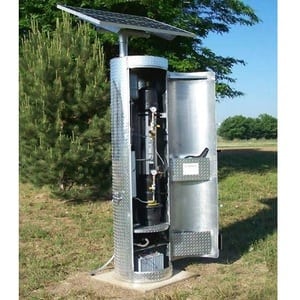
Agriculture
January 17, 2024
SunSpring Hybrid
Read SolutionImplemented by
Innovative Water Technologies
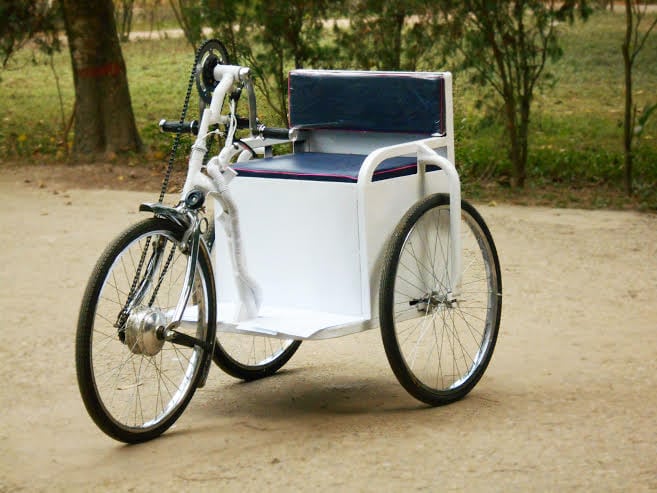
Updated on February 29, 2024
·Created on July 1, 2016
CARC Hybrid wheelchair – a solar powered, four-wheeled electric-assisted wheelchair with hand petals for movement and steering.
CARC Hybrid wheelchair – a solar powered, four-wheeled electric-assisted wheelchair with hand petals for movement and steering.Interview with representative
This product is still a prototype. Photos and data pertain to the 1st iteration of this product.
Target SDGs
SDG 3: Good Health and Well-Being
Target Users (Target Impact Group)
Household
Distributors / Implementing Organizations
Locally CARC, Globally IEEE SIGHT USAInterview with representative
Competitive Landscape
Direct competitors include Motivation Rough Terrain Wheelchair, Leveraged Freedom Chair, GEN_1 Design Wheelchair, and Rough Rider Wheelchair.
Countries
Bangladesh
Manufacturing/Building Method
Prototype
Intellectural Property Type
Select Type
User Provision Model
Prototype. Product cannot yet be purchased.
Distributions to Date Status
Prototype. Distribution has not yet begun.
Maximum rider load (kg)
To be determined with final design
Seat widths (min-max, cm)
To be determined with final design
Seat depths (min-max, cm)
To be determined with final design
Adjustable seat (yes/no)
To be determined with final design
Frame type (folding/rigid)
To be determined with final design
Frame type (material)
To be determined with final design
Seat angles (degrees):
To be determined with final design
Footrest heights (min-max)
To be determined with final design
Repairable with universal components (yes/no)
Yes
Chair weight (kg)
To be determined with final design
Fatigue tested (yes/no)
Unknown
Fatigue test results (cycles)
Unknown
Design Specifications
Prototype component details:Interview with representative
- Thin iron sheets/aluminum as a base material
- Standard (global) wheelchair dimensions used for prototype design
- Can be driven using both a throttle and torque sensor pedal
- Solar charger kit required to charge the battery bank.
Technical Support
Electrical or mechanical workshops with professional and expertise mechanics are capable of providing technical support to any wheelchair malfunction. If any motor or battery malfunction occurs, the user will have to take the wheelchair to the after sales service center or to the manufacturer.Interview with representative
Replacement Components
Unknown if components are replaceable or designed specifically for the wheelchair.
Lifecycle
The wheelchair is expected to have a lifetime of 36 months with everyday outdoor use. The warranty of the wheelchair depends on the warranty of the electrical components within the wheelchair.Interview with representative
Battery: 2 years
Hub motor: 1 year
Service warranty: 1 year
Manufacturer Specified Performance Parameters
Throttle: Hub motor takes power from battery bankInterview with representative
Torque sensor panel: Takes power from the battery to drive the motor. Works with the torque adjuster circuit to assist the user. The user also provides mechanical energy to provide the necessary power to move the wheelchair.
Vetted Performance Status
The wheelchair can be operated until the battery charge drops to 50% State of Charge.Interview with representative
Safety
Wheelchairs are always at risk of tipping over, especially on rough terrains. A wheelchair must also be comfortable and fit the user properly or the user may be at risk of developing injury (such as scoliosis or pressure sores).
Complementary Technical Systems
Unknown.
Academic Research and References
Chien, C-S., et. al. (2014), Design and development of solar power-assisted manual/electric wheelchair. Journal of Rehabilitation Research and Development, 51:9; 1411-1426.
Compliance with regulations
None. CARC will begin certifying the wheelchair after the end design is developed.Interview with representative
Evaluation methods
Laboratory testing was conducted on various components of the prototype wheelchair in the CARC laboratory at BRAC University. Field testing is ongoing by the Center for the Rehabilitation of the Paralyzed patients and doctors.Interview with representative
Other Information
This product was featured in an article on Engineering for Change's website, where the designers and company representatives answered questions about the wheelchair and its plans for the future. The wheelchair is currently being developed, and will soon launch its second edition with edits and modifications determined from field testing and feedback.

Agriculture
January 17, 2024
Implemented by
Innovative Water Technologies
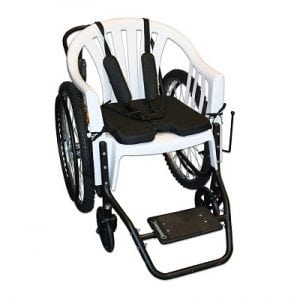
Agriculture
February 29, 2024
Implemented by
Free Wheelchair Mission
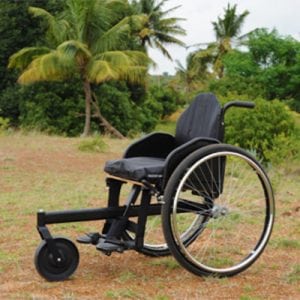
Agriculture
February 29, 2024
Implemented by
Motivation
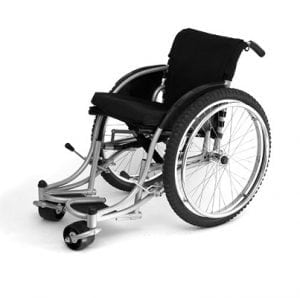
Agriculture
February 29, 2024
Implemented by
Whirlwind Wheelchair International
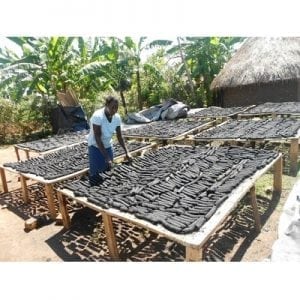
Agriculture
November 22, 2024
Implemented by
Appropriate Energy Saving Technologies Limited (AEST)
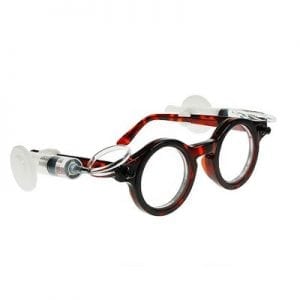
Agriculture
February 5, 2024
Implemented by
Centre for Vision in the Developing World
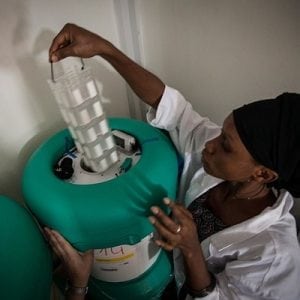
Agriculture
February 20, 2024
Implemented by
Intellectual Ventures Lab
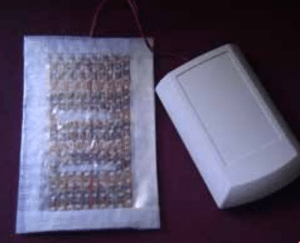
Agriculture
March 1, 2024
Implemented by
Infantrust Parenting Solutions

Agriculture
June 3, 2024
Implemented by
Dimagi

Agriculture
March 10, 2024
Implemented by
Disease Diagnostic Group
Have thoughts on how we can improve?
Give Us Feedback
Given the fact that this product is already in (small scale) production, it makes sense to focus on creating demand, either by partnering with local distributors/NGOs or contracting with larger international and national organizations. I would like to know if scaling up the production is considered.
hey folks I’ll follow up w a longer email. I strongly feel that what you’re up to here is extremely useful–wheelchair riders are an especially disempowered user group, and wheelchairs are such an example of a product category where 3rd party payers distort all the normal feedback mechanisms that make products good (/keep them from being awful), and there is a huge need for independent info…
I think there are a lot of challenges to doing this for maximum impact and specifically for avoiding providing advertisement for bad tech. I spoke to Mariela today and will follow up later this month (I’ve just emailed colleagues to see who else might want to be involved).
OK regarding this comparison in particular:
it’s really too apples-and-oranges to work in a meaningful way. It’s a bit like comparing a 2016 Honda Accord to the work of a Solar Car team at the local college. the Motivation product has been manufactured in the tens of thousands since 2004-2005, and is part of a full product line developed and distributed by an organization which has been driving the maturation of the wheelchair industry since the early 1990’s. The solar hand cycle may represent cool R&D that might one day become a product, and I in no way mean to diminish it’s value–it just can’t be compared on the same page.
Also a side note although both have three wheels and serve people with impaired mobility, they serve different user groups: “hand cycles” like the CARC as opposed to “wheelchairs” like the Motivation device are designed to be used primarily outdoors, and sacrifice the ability to maneuver indoors/in bathrooms in order to do a better job of going fast and far with cargo. As such they are typically used by people who are happy to crawl or walk indoors. https://www.youtube.com/wat… is a video that an amazing intern named Joe Mellin made for me in 2006 that discusses the differences…
Anyway I’ll submit feedback on the individual devices
Matt,
Thanks for the comment and insight. I conducted the research on the CARC Hybrid, and may have conducted research on the Motivation (it was completed about 2 years ago, can’t truly remember). I agree that they are very different products, especially since the Motivation has been designed for indoor use while the CARC Hybrid is much better suited for outdoor maneuvering.
We are always thinking about the organization of the solutions we feature, since we know that it will become a mess of various technologies if we do not maintain strict organization guidelines. The point of comparing the two here is that their uses are very similar, and separating them into 2 different technology categories will take away from the value of each individual report since the comparisons are often the most beneficial pages to view. We thought that they were comparable enough to be included in the same group due to their similar, though not identical, uses.
Regardless of whether the comparison is effective, it allows us to look at (as you said before) apples and oranges and attempt to compare them, which is information that can be used. I do agree that it is a bit of a stretch here since the movement method and uses vary greatly. The hope is that the technical details about the products will speak for itself in the comparisons, but the CARC is clearly overpowered by the Motivation.
I would still push for the two to remain in the same category. If we separate these two, then we will need to begin to further evaluate other technology categories and expand the amount of those available, which will have a diminishing effect on the effectiveness of the database. The database is currently in Beta, so I believe further organization should be discussed in future planning phases of the platform in order to improve the quality of the platform. E4C is growing as the developing market is expanding, and every year these things need to be considered, including comparisons such as this.
Thanks again for your response and insight, I always enjoy discussions about the development space and think about the best approaches for the future.
It’s unclear which configuration these performance parameters are for: AMIS-FOUNDATION, AMIS-50, AMIS-MVUA KALI, AMIS-IMPACT, or AMIS-DRIP. Essential to clarify is what pumpset goes with which configuration, and to list the specifications of the pumps and other components (i.e. drip emitters, impact sprinklers, etc.) themselves. This is more useful to a system designer than the specifications of the entire system, since performance is highly dependent on configuration. For example, more complete specification of the KOSHIN-SEV-50X can be found on their website: http://shop.koshinpump.eu/i…
Double check “Required Pressure”. 71 MPa is over 700 atmospheres of pressure. Also, I’m not entirely sure what “Required Pressure” refers to.